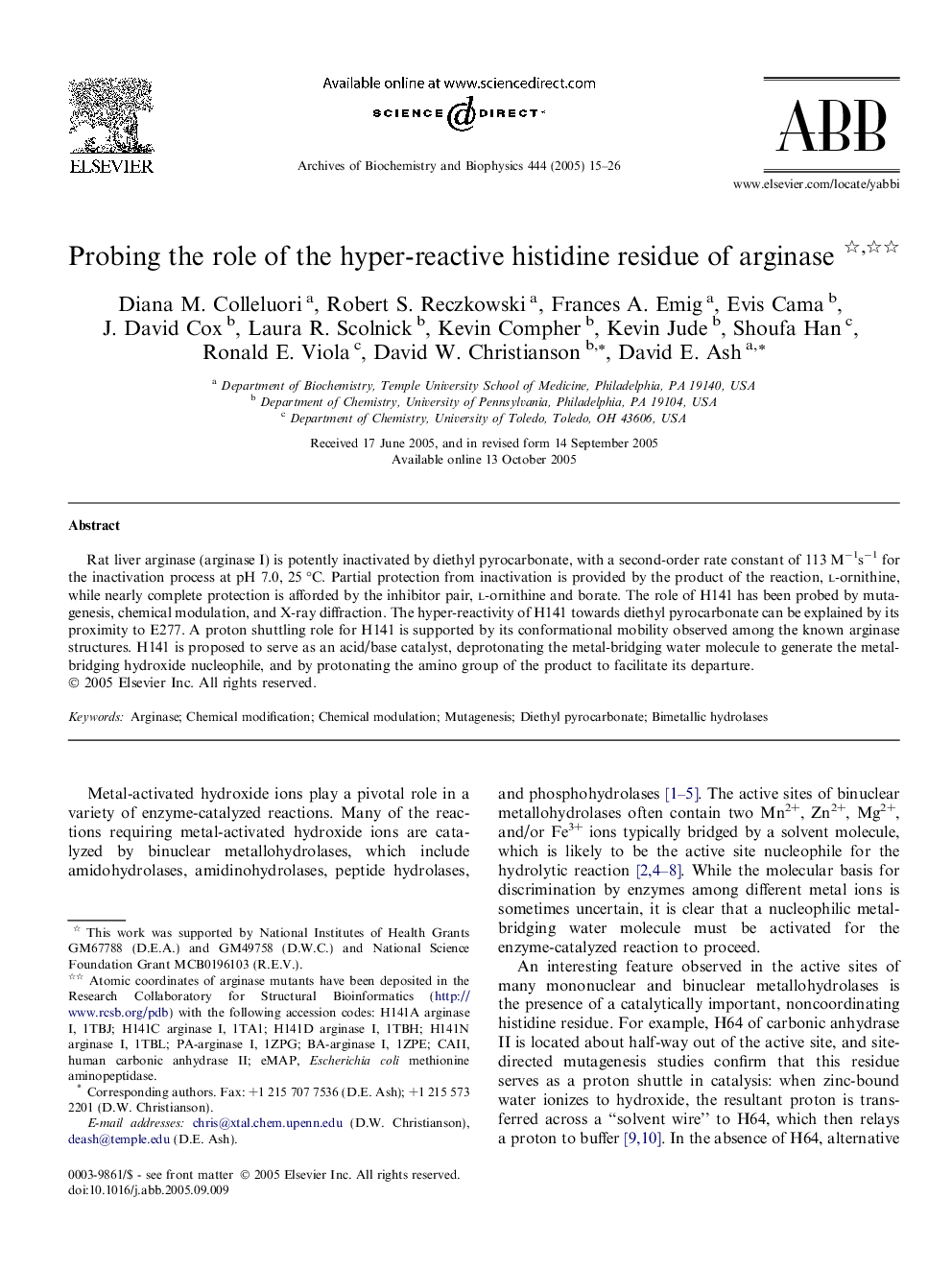| Article ID | Journal | Published Year | Pages | File Type |
|---|---|---|---|---|
| 9882073 | Archives of Biochemistry and Biophysics | 2005 | 12 Pages |
Abstract
Rat liver arginase (arginase I) is potently inactivated by diethyl pyrocarbonate, with a second-order rate constant of 113 Mâ1sâ1 for the inactivation process at pH 7.0, 25 °C. Partial protection from inactivation is provided by the product of the reaction, l-ornithine, while nearly complete protection is afforded by the inhibitor pair, l-ornithine and borate. The role of H141 has been probed by mutagenesis, chemical modulation, and X-ray diffraction. The hyper-reactivity of H141 towards diethyl pyrocarbonate can be explained by its proximity to E277. A proton shuttling role for H141 is supported by its conformational mobility observed among the known arginase structures. H141 is proposed to serve as an acid/base catalyst, deprotonating the metal-bridging water molecule to generate the metal-bridging hydroxide nucleophile, and by protonating the amino group of the product to facilitate its departure.
Related Topics
Life Sciences
Biochemistry, Genetics and Molecular Biology
Biochemistry
Authors
Diana M. Colleluori, Robert S. Reczkowski, Frances A. Emig, Evis Cama, J. David Cox, Laura R. Scolnick, Kevin Compher, Kevin Jude, Shoufa Han, Ronald E. Viola, David W. Christianson, David E. Ash,
